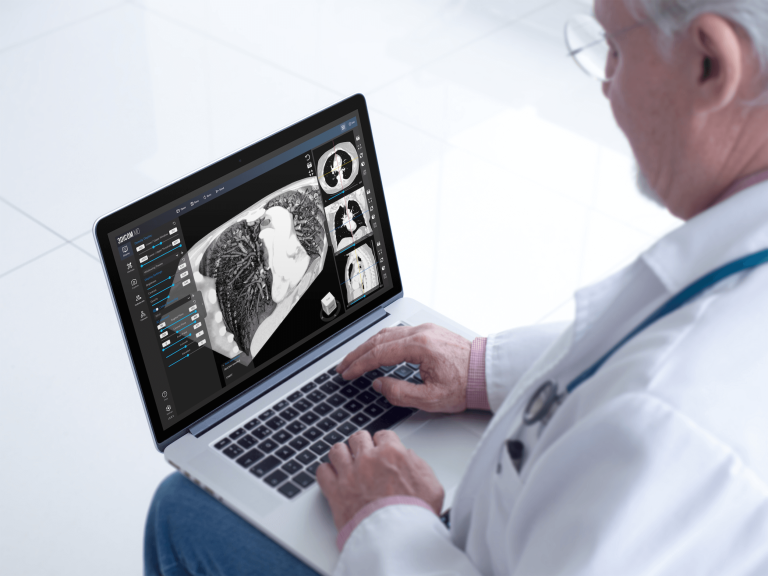How to Select the Best DICOM Viewer for Patients with CD-ROM Images
Struggling to find the best DICOM Viewer for CD-ROM Images? Here are some of the main features to consider when selecting.

If you’ve received your medical images on a CD-ROM, you may be wondering how to view them at home. DICOM files are the standard format for storing medical images like CT, MRI, and X-rays, but they require specialized software to open. Thankfully, there are many DICOM viewers available that cater to different needs. This article will help you choose the best DICOM viewer based on factors such as ease of use, platform compatibility, and key features for patients.
1. Platform Compatibility
Before you choose a DICOM viewer, it’s important to confirm that the software is compatible with your operating system. Some viewers are restricted to specific platforms, while others offer cross-platform support.
- 3DICOM Patient’s online viewer works on both Windows and MacOS, making it a versatile choice for users on multiple operating systems.
- RadiAnt DICOM Viewer is a popular option but is limited to Windows users.
- Horos, an excellent free and open-source tool, is exclusive to MacOS.
- Weasis is a great cross-platform, open-source viewer that supports Windows, MacOS, and Linux.
For maximum flexibility, a cross-platform solution like 3DICOM Patient or Weasis would be ideal.
2. Ease of Use
As a patient, you likely don’t need all the advanced tools that professionals use. Instead, you’ll want a DICOM viewer with an intuitive interface that makes it easy to load, view, and interact with your medical images.
- 3DICOM Patient is specifically designed for non-professionals, offering an intuitive, patient-focused interface. It allows you to visualize your scans in 3D, rotate, zoom, and explore your images in a simple, user-friendly way.
- MicroDicom is another easy-to-use, free viewer with a clear and simple interface, although it primarily focuses on 2D viewing.
- RadiAnt DICOM Viewer is slightly more technical but still fairly easy to navigate, with tools like zoom, pan, and image enhancement for a detailed view.
Tip: If you’re new to medical imaging, you might appreciate a viewer with simple navigation and help documentation. 3DICOM Patient offers built-in tutorials and resources for patients to understand their medical images better.
3. Features: Basic vs. Advanced
The features you need will depend on what you want to do with your medical images. Some patients simply want to view their scans, while others may want to explore the anatomy in more detail or even take measurements.
- 3DICOM Patient offers 3D volume rendering, which allows you to rotate and view your scans from different angles. This can provide a more complete understanding of your health condition, making it an excellent option if you want more interactivity.
- RadiAnt DICOM Viewer and MicroDicom focus on 2D viewing, but they also offer useful tools for zooming in, panning, and windowing to enhance the image contrast for better clarity.
- Horos and Weasis offer multiplanar reconstructions (MPR), which allow you to see your images from different planes, but these tools are more geared toward professionals.
Key takeaway: If you want a simple viewer, something like MicroDicom or RadiAnt will meet your needs. But if you’d like to explore your scans in 3D and gain a deeper understanding, 3DICOM Patient provides a richer experience.
4. Free vs. Paid Viewers
Your budget may also influence your choice of DICOM viewer. Fortunately, there are excellent free DICOM viewers available, but you may need to invest in paid options if you want more advanced features or better customer support.
- RadiAnt DICOM Viewer offers a free trial but requires a paid license for continued use, especially if you want access to advanced features like 3D reconstruction.
- MicroDicom is completely free, as is Weasis, although these tools are more basic in their feature sets.
5. Security and Privacy
When dealing with medical data, security is paramount. Make sure that the DICOM viewer you choose complies with standard data protection practices, especially if you’re uploading files to the cloud or sharing them with healthcare providers.
- 3DICOM Patient uses AES-256 encryption to protect your files both at rest and in transit, ensuring that your medical data remains secure at all times.
- PostDICOM, a cloud-based viewer, also provides secure storage and sharing through its encrypted platform, ideal for patients who need to share their files with multiple professionals.
- RadiAnt and MicroDicom offer offline viewing, which can be beneficial if you prefer to keep your files stored locally on your computer.
Tip: If you plan to store or share your files online, make sure to choose a viewer with built-in encryption to keep your data safe.
6. Cloud-Based Sharing and Collaboration
If you need to share your DICOM files with healthcare providers for a second opinion or remote consultation, it’s useful to have a DICOM viewer that supports cloud-based sharing.
- 3DICOM Patient offers an easy-to-use cloud-based storage and sharing feature, which allows you to upload your images and share them securely with healthcare providers.
- PostDICOM is another cloud-based solution that offers free storage up to a certain limit, with paid plans for larger storage needs.
- RadiAnt DICOM Viewer allows you to export your files, but you will need to share them via a different platform, as it does not provide built-in cloud sharing.
7. Support and Documentation
Especially for patients, having access to customer support and clear tutorials can make a big difference. Look for DICOM viewers that offer detailed help documents, forums, or even live support if needed.
- 3DICOM Patient provides tutorials and guides tailored specifically for patients, helping you navigate the software and understand your scans.
- RadiAnt DICOM Viewer has an active user forum, but may not offer as much direct support for beginners.
- MicroDicom provides a simple FAQ section but does not offer much in the way of in-depth tutorials.
Conclusion
Selecting the right DICOM viewer for your medical images can greatly enhance your understanding of your health. If you’re looking for an easy-to-use, cross-platform tool with advanced 3D capabilities, 3DICOM Patient is a top choice, offering a balance between simplicity and functionality. For basic, free tools, MicroDicom or Weasis might meet your needs. No matter which viewer you choose, be sure to consider platform compatibility, ease of use, and security when making your decision.
For more information on available DICOM viewers:
- Visit 3DICOM Patient.
- Explore RadiAnt DICOM Viewer.
- Learn more about MicroDicom.


